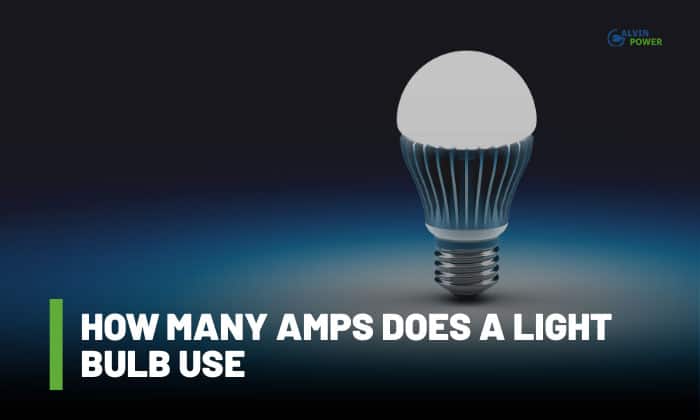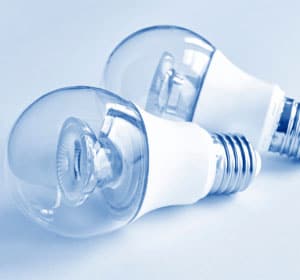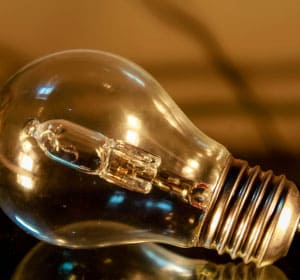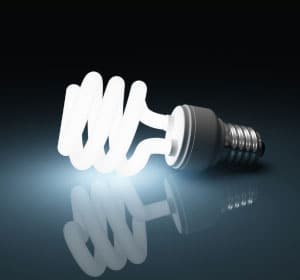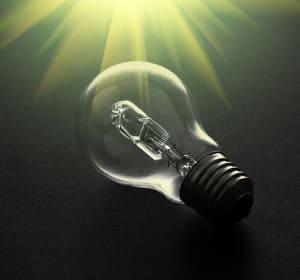Light bulbs are vital to any residence, providing illumination in all areas of the home. To safely establish every electrical circuit during installation, it is critical to know how many amps does a light bulb use.
However, different light bulbs and voltage types may use different amp ratings. Furthermore, several factors could also affect the current rating of the light bulb. Let’s go over this in more detail below, including how to compute the amp rating of each bulb.
Table of Contents
How Many Amps Does a Light Bulb Draw?
When it comes to establishing a safe electrical circuit for a lighting system, determining the amps of a light bulb is a must. Even though light bulbs typically have low current ratings, you can still overload a circuit if you exceed the usage power of a circuit.
However, the amp rating of a light bulb may depend on the specific bulb type as well as the voltage used to achieve your ideal illumination. Therefore, let us look at the different light bulbs and how much current they typically use.
1. LED Light Bulb
Light-emitting diodes or LED bulbs are the most energy-efficient bulbs out there. They draw about 0.2 amps to 0.6 amps when running on a 120V system. It draws the least amount of current but emits a brighter illumination of a given wattage of LED bulbs.
However, it generally comes at a high upfront price that transitions to be cost-effective over time.
2. Incandescent Light Bulb
The incandescent bulb is the old standard light bulb used in most residential areas. It uses a metal filament that lights up when electricity flows into it.
However, due to its ways of lighting, it also produces more heat, resulting in more amp drawings to achieve the same illumination as LED lights. In fact, it has an amperage draw of 0.5 amps – 0.8 amps.
3. Fluorescent Light Bulb
A fluorescent bulb is a type of bulb that uses a mixture of gas and various substances. This is typically more efficient than an incandescent bulb and commonly used in homes, offices, and other large indoor spaces. This type of light bulb draws about 0.2 – 0.5 amps.
However, since it contains a substance such as mercury that can be harmful to the environment, proper disposal is a must.
4. Halogen Light Bulb
A halogen bulb is a more efficient and long-lasting version of an incandescent light that uses halogen gas. It’s also more energy efficient than the standard incandescent light. The halogen gas helps the metal filament burn hotter and more efficiently, delivering more illumination for the amp drawn by an incandescent bulb.
Aside from the various types of light bulbs stated above, the amperage drawn by a light bulb also affects the voltage rating of a circuit. In general, a 120-volt bulb may have a different amp rating than a 240-volt bulb with the same wattage.
A 100-watt bulb, for example, will use around 0.83 amps when connected to a 120-volt circuit, whereas it uses just 0.42 amps when connected to a 240-volt circuit.
A 100-watt bulb, for example, will use around 0.83 amps when connected to a 120-volt circuit, whereas it uses just 0.42 amps when connected to a 240-volt circuit.
Calculate Amps for Light Bulbs
To calculate the amp drawn by a light bulb, you need to know the light bulb wattage rating and the circuit voltage where you will use the bulb. Then you can now start the calculation using the simple formula watts divided by voltage.
\begin{equation}
P(W) = \frac{U(V)}{I(A)}
\end{equation}
For example, a 60-watt incandescent bulb should be used in 120 volts circuit. As a result, a 60-watt incandescent bulb divided into a 120-volt circuit will result in an average amp draw of 0.5 amps.
For various bulb watt ratings, see the amperage chart below, which shows different amperage ratings when used in other circuits with varying voltage ratings.
| Bulb Wattage | Average Amp Draw at 120v | Average Amp Draw at 220v |
| 5 watts | 0.041 amps | 0.022 amps |
| 8 watts | 0.066 amps | 0.036 amps |
| 10 watts | 0.083 amps | 0.045 amps |
| 15 watts | 0.12 amps | 0.068 amps |
| 20 watts | 0.16 amps | 0.091 amps |
| 30 watts | 0.25 amps | 0.136 amps |
| 40 watts | 0.33 amps | 0.182 amps |
| 50 watts | 0.41 amps | 0.227 amps |
| 60 watts | 0.5 amps | 0.273 amps |
Factors Affect Amp Draw of a Light Bulb
The amperage rating of a bulb is affected by several factors, such as:
1. Watts
The wattage rating of a light bulb indicates its capacity to produce light. Typically, bulbs with higher wattage have a greater luminosity and require a higher amp draw for their particular bulb type.
2. Volts
The circuit voltage rating also affects the amp drawn by a bulb. Normally, lower voltage results in a higher amp draw, and higher voltage results in a lower amp draw. You can see some examples above in the bulb amp chart.
3. Wire Length
Lastly, the wire length used for the light connections also affects a bulb’s amp draw. Usually, longer lines have a greater resistance, which may result in potentially drawing more amps. This prevents voltage drop as electricity needs to travel a long distance compared to shorter lines.
Tips for Saving Power When Using Light Bulbs
Lowering power consumption when using a light bulb is also essential to reduce the electricity bill cost. Here are a few tips to save some bucks:
- Use energy-saving bulbs such as LEDs and Fluorescent bulbs to illuminate your home.
- Choose a lower-wattage bulb that is still enough to illuminate your spaces.
- Invest in a motion sensor so your light will automatically turn off when you leave the room.
- Use dimmer switches to adjust the amount of light when you don’t need as much illumination.
- Install as individual switches as possible so you can turn on lights in particular areas, not whole rooms.
- Use natural lights during daylight instead of light in a bulb.
- Lastly, always turn off the lights when not in use.
Frequently Asked Questions
The Best Time to Use a Light Bulb
Generally, all light bulbs are best used only when needed. However, if your bulb gets more efficient and lasts longer, you should choose a bulb that is specifically right for the job. Additionally, it is important to keep in mind that certain types of bulbs may have their lifespan affected by frequent on-off cycles.”
Cost To Power a Light Bulb
If you wonder how much energy a light bulb uses, it mainly depends on your area’s total bulb watts rating, usage hours, and electricity price. To get the average energy cost of a light bulb, you first need to determine its average kilowatts hour per year.
Assuming that you are using a five lamp with a 5w bulb for 10 hours a day, you may use an average of 91.25 kWh per year. In this case, here are some states’ average energy costs per month and year.
| State | Energy Cost | Average Cost Per Month | Average Cost Per Year |
| Wyoming | 10.28¢ / kWh | $0.78 | $9.38 |
| California | 26.45¢ / kWh | $2.01 | $24.13 |
| South Carolina | 13.99¢ / kWh | $1.07 | $12.90 |
| Florida | 15.01¢ / kWh | $1.14 | $13.69 |
| North Dakota | 9.91¢ / kWh | $0.75 | $9.04 |
| Nevada | 16.81¢ / kWh | $1.27 | $15.33 |
| Indiana | 15.43¢ / kWh | $1.17 | $14.07 |
| Texas | 14.18¢ / kWh | $1.07 | $12.93 |
| Arizona | 12.62¢ / kWh | $0.95 | $11.51 |
| New York | 23.57¢ / kWh | $1.79 | $21.50 |
Please note that price per state is based on Energy Information Administration January 2023.
How Many Amps Does a 60-Watt LED Bulb Use?
Depending on the circuit voltage rating is the amp draw of a 60 watts LED bulb. It can draw an average of .5 amps in 120 volts circuit or .273 amps in 220 volts circuit.
Conclusion
Knowing how many amps does a light bulb use is essential to have a safe and efficient lighting system. This way, you can prevent overloading the circuit by installing too many bulbs that may exceed the power rating of the circuit.
Additionally, it is important to note that different bulb types with the same wattage can produce varying illumination levels. Thus, selecting the bulb that meets your lighting requirements is advisable. Also, it is good to consider the energy-saving tips outlined above to help lessen your electricity bill.

I am Edwin Jones, in charge of designing content for Galvinpower. I aspire to use my experiences in marketing to create reliable and necessary information to help our readers. It has been fun to work with Andrew and apply his incredible knowledge to our content.

